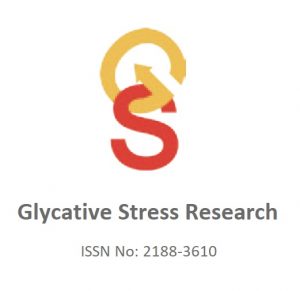Publications

Relationship between glycative stress markers and skin stiffness
Authors: Kaori Ishizaki, Masayuki Yagi, Yuji Morita, Chieko Sakiyama, Yoshikazu Yonei
Affiliations:
Anti-Aging Medical Research Center and Glycative Stress Research Center, Faculty of Life and Medical Sciences, Doshisha University, Kyoto, Japan
Journal: Glycative stress research - September 2020, Volume 7 (3), pages 204-210 (DOI: 10.24659/gsr.7. 3_204)
-
Field & Applications:
- Medical
- Skin / Dermatology
- Gerontology / Ageing
Purpose: The purpose of this study was to verify the relationship between glycative stress and skin stiffness and fluorescence derived from advanced glycation end products (AGEs), Nε-(carboxymethyl) lysine (CML) content in corneum or blood oxidative stress (OS), and the skin stiffness were measured in healthy men and women.
Methods: The subjects were 58 healthy men and women in their 20s to 80s. The intensity of skin AGEs fluorescence (SAF) was measured using three devices, AGE Reader su, AGE Reader mu, and AGEs sensor. The measuring site tested by theAGE Reader su was the inside of the upper arm, and that by the AGE Reader mu were on the inside of the forearm, and that by the AGEs sensor was the middle finger. The CML content in corneum, which was from the inside of the upper arm using the tape stripping method, was measured by ELISA. Skin stiffness was evaluated on the inside of the upper arm using MyotonPRO, and the biomechanical parameters, Tone, Stiffness, D value (logarithmic decrement), were obtained. The oxidative stress (OS) was evaluated using a Spotchem i-Pack Oxystress test. The correlation analysis of the measured values was verified between the biomechanical parameters for skin stiffness and the SAF, the CML content in corneum or OS. This study was carried out with the approval of the Ethics Review Committee of the Society of Glycative Stress Research.
Results: A significant positive correlation was noted between the subjects’ age and the biomechanical parameters of Tone, Stiffness and D value. The SAF of the forearm measured by AGE Reader mu were significantly correlated with Tone and Stiffness and had a correlation tendency with D value. No correlation was observed between the SAF of the middle finger measured by AGEs sensor and the biomechanical parameters. CML content in the corneum was negatively correlated with Tone and Stiffness, while not correlated with the D value. The OS did not show any correlation with the biomechanical parameters.
Conclusion: An elevation of the skin AGEs as well as ageing were associated with higher Tone and Stiffness. In contrast, the increase of the CML content in the corneum was associated with lower Tone and Stiffness. The OS of the blood, an index of oxidative stress, was not associated with the biomechanical properties. These findings suggested that the skin AGEs and the CML content in the corneum accumulation due to glycative stress may influence the elasticity and viscoelasticity of skin.
Keywords: skin AGEs, Nε-(carboxymethyl)lysine), skin tissue, stiffness, glycative stress
The value of skin AGEs in the inner part of the forearm or upper arm, as well as subjects’ age, correlates with biomechanical properties measured by MyotonPRO, i.e. Tone, Stiffness of the skin, and it was observed that ageing and glycative stress caused the skin tissue to increase in stiffness and the elasticity to reduce. In addition, the CML content in the corneum was negatively correlated with Tone and Stiffness, while OS measured as an index of oxidative stress did not correlate with biomechanical properties of the skin. It was suggested that the accumulation of skin AGEs and CML in the corneum due to glycative stress may influence the stiffness of the skin.


